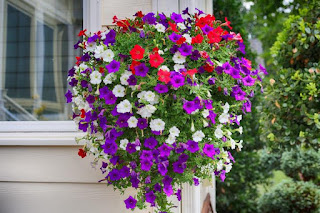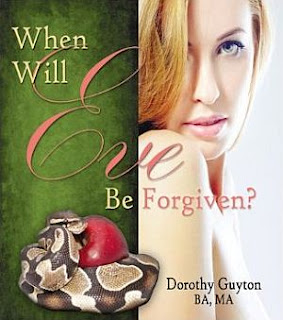Humans are COMPLICATED! I could stop right there and not say another word because that sums up what we are as human beings: complicated. Psychology has tried to explain the human mind and how it affects our human behavior. Theory after theory has been presented and diagnosis after diagnosis is attributed. But through all of the study by experts of human beings, the conclusion remains, people are complicated and cannot be put into ONE nice neat package wrapped with a lovely bow.
After speaking with my daughter and she laughingly admitting, "I'm so much like daddy," I had to agree. But on the other hand, she does so many little things that remind the family of me. All of a sudden it came to me and I said, "You are three people. You are dad, me, and your quirky self. You are a TRINITY."It's true. We acknowledge on a biological level that our children possess DNA from the father and the mother. The passed along DNA gives the child certain PHYSICAL characteristics from each parent. We are comfortable acknoledging our sweet little child has their father's ears or feet or our child has their mother's eyes or delicate hands. We look for those passed along similarities often with joy. But then there are those times of frustration or stress when we say with not so happy feelings, "You act just like your father. You act just like your mother." Oh, if you are a parent, sooner or later, it slips out. We also know it is not good for a child's mental health to be told they behave like a parent who has been disappointing, missng, abusive, or any other negative attribute by a parent.
But, when I began to think about the THREE-PART-PERSON on a level other than biological, I thought, "If we are created in the image of God and God consists of the Father, Son, and the Holy Spirit, then may we also on another level exist as a TRINITY on another level?"
Children who have been raised with a single parent, mysteriously enough still have certain BEHAVIOURS of the absent parent even though they were never exposed to those behaviours to mimic or incorporate internally from enviromental exposure. You may notice the child tilts their head in a certain way when they laugh just like the absent parent. The child may hold objects or react to things in the same way as their absent parent and it usually blows the present parent's mind.
There is an ESSENCE to us we carry from our parent in which glimpses are always peeking through. I don't believe scientists have come to a conclusion saying PERSONALITY traits are passed down from each parent. Scientist have said NURTURE and ENVIROMENT (nature) have the biggest influence on a child's development not exactly knowing which is the most influential at all times in a child's life. But who has looked at the SPIRITUAL part of the transfer children receive from EACH parent?
In Christianity, it is taught that the body is only a TEMPORARY housing for the spirit. We are spiritual beings having a human experience. In Thessalonians 5:23 it says, "And the God of peace Himself sanctify you wholly, and may your SPIRIT, and SOUL, and BODY be preserved complete, without blame, at the coming of the Lord Jesus Christ." Our material bodies are evident, but our souls and spirit are less distinguishable. Thessalonians also shows the TRINITY within us in that particular verse.
Each day, if what I am now coming to believe is true, then we each walk around EVERYDAY with the SPIRIT or essence TRANSFER from each of our parents along with our own individual SPIRIT or essence. That is MINDBLOWING isn't it? I have come to advocate for dating people to be knowledgeable of the people you may PROCREATE with. RIGHT? We are doing some serious transfers with each others and to our children.
I want to also say we need to nurture those transfers were receive from each of our parents present or absent. A person is NOT ALL BAD OR ALL GOOD. Parents should recognize those little quirks and if there is a comment; make it a positive one. If correction is needed; be gentle and positive too. But, I do wonder, "How much of the TRINITY can be changed and manipulated by us mere mortals?" We didn't put it there so can we change it?
Anyway, I just found it awesome to discover we are created in the image of our Creator in such a dynamic way. We are a TRINITY also in so many ways.
This post dedicated to my beautiful daughter, Desarea.























































